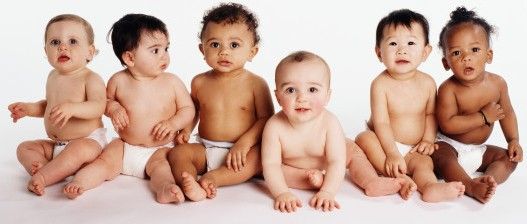Fairness is a key component of human civilization, letting us share valuable resources, but does it develop the same way, and at the same pace, across all cultures? Maybe not, a study suggests.
Fairness is a key component of human civilization, letting us share valuable resources, but does it develop the same way, and at the same pace, across all cultures?
Maybe not, a study suggests.
Using a game in which they distributed candy between players, researchers found that children around the globe were quick to reject deals unfair to them. But in only three countries—the United States, Canada, and Uganda—children also spurned deals unfair to others.
“We had run studies exploring this idea—what we call inequity aversion—in the Boston area,” said researcher Felix Warneken of Harvard University, senior author of the study, described in a Nov. 18 issue of the journal Nature.
What the new study added, he said, was “looking at the cross-cultural specificity of it.”
In each test, two children—one designated as the actor and the other the recipient— seated on opposite sides a setup made of two platforms and two handles. Experimenters put candy on the platforms in different distributions, some favoring the actor and some favoring the recipient.
“In some trials, the distribution was one piece of candy for the actor and four for the recipient, and in others it was the other way around,” Warneken said. “If the actor decides to accept the distribution, they pull a green handle, the platforms tilt out and they get the candy. If they reject it, they pull a red handle, the platforms tilt in, the candy falls into a bowl and nobody gets any.”
In Boston-area tests, researchers had found children’s age influenced how they reaction to different forms of inequity. Young children were quick to reject distributions—known as disadvantageous inequity aversion—in which the other person got more candy. By about eight years old, however, children also began to reject distributions that favored them, called advantageous inequity aversion.
“That was a somewhat surprising finding,” said study co-author Peter Blake, now of Boston University. “When we asked them why they did it, they said it was not fair.”
Spurred by those results, Blake and collaborator Katie McAuliffe of Boston College set out to examine other cultures—eventually running tests in Canada, India, Mexico, Peru, Senegal, Uganda and the United States.
“Given that we see disadvantageous inequity aversion so young in the U.S., we thought it was more likely we would see it in all cultures, and indeed, that’s what we found,” McAuliffe said. “There was some variation in the age when it emerged, but we saw it everywhere.”
Rejections of allocations that favor the child, however, were seen in only three countries—the U.S., Canada and Uganda. Uganda being the only non-Western country in the group, it may have been similar because “children from the school in which we conducted our study interact with Westerners on a fairly regular basis,” she said.
The findings, the researchers said, suggests that while disadvantageous inequity aversion may be a human universal, the opposite appears to be more influenced by cultural norms.
“This is a nice first step, and a large one, toward making the case that disadvantageous inequity aversion looks like a universal feature,” Blake said. “But it’s important to note that we were limited in the cultures we tested. We didn’t test hunter-gatherers, for example, so there’s always a possibility that we may not see this phenomenon in those cultures.”
Warneken, Blake and McAuliffe said the study lays a foundation for future work by letting researchers target specific countries that may produce interesting results and to think deeply about how cultural differences may influences the development of fairness behaviors.
“We conducted this study on a shoestring budget, which meant we worked with collaborators who already had access to the sites,” Blake said. “Now that we have a picture of what this looks like, and recognize that there are two different processes at work here, we can be more targeted in which cultures we want to study in the future.”
One idea going forward, Warneken said, would be to start with cultures in which adults have shown large differences in inequity aversion, and investigate whether those differences are also seen among children.
“We are not claiming that this advantageous inequity aversion does not exist in these cultures, it’s only that we do not find it in childhood and early adolescence,” Warneken said. “It could just be that this is something kids in the U.S., Canada and Uganda are pushed towards early on, and we can speculate that in other cultures this is something that emerges later, when they are adults and engage in more of these economic exchanges.”










